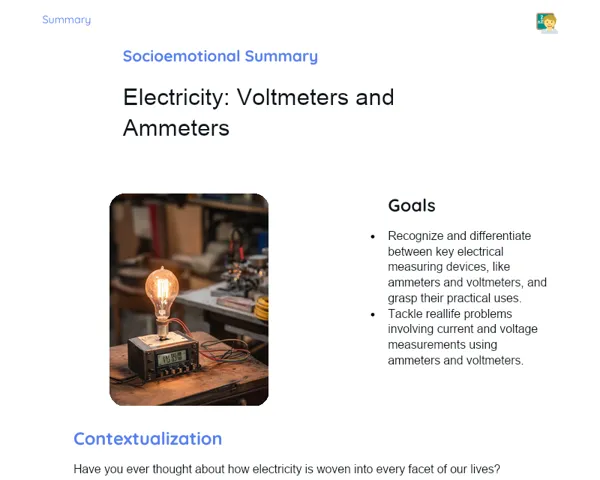Goals
1. Grasp the concept of Simple Harmonic Motion (SHM).
2. Calculate amplitude, velocity, and acceleration at key points of SHM.
3. Determine the oscillation period of a mass-spring system.
4. Connect theoretical knowledge of SHM to its practical applications in the job landscape.
Contextualization
Simple Harmonic Motion (SHM) is a type of oscillatory motion that we can observe in many day-to-day scenarios, like the swing of a pendulum or the vibrations of a guitar string. In the case of a mass-spring system, SHM helps us understand how energy gets stored and transferred between the mass and the spring. This concept has invaluable applications across various fields, such as automotive engineering, where SHM principles are used in suspension systems to absorb bumps and ensure a smooth driving experience. Another instance is in the calibration of instruments, like seismographs, which depend on precise oscillatory movements for accurate data measurement.
Subject Relevance
To Remember!
Simple Harmonic Motion (SHM)
Simple Harmonic Motion (SHM) is a form of oscillatory motion which occurs when the restoring force acting on an object is directly proportional to its displacement from its equilibrium position, acting in the opposite direction. In a mass-spring system, SHM is observed when a mass attached to a spring is moved from its equilibrium position and released, causing it to oscillate back and forth.
-
The restoring force is directly proportional to the displacement.
-
The SHM equation is F = -kx, where k is the spring constant and x is the displacement.
-
SHM is periodic, meaning it repeats at regular intervals.
Amplitude, Velocity, and Acceleration
Amplitude refers to the maximum distance that the mass travels from its equilibrium position. Velocity and acceleration vary throughout the oscillation, with their peak values occurring at the equilibrium position and dropping to zero at the extreme points. Maximum velocity is measured when the mass moves through the equilibrium position, while maximum acceleration occurs at the compression or extension peaks of the spring.
-
Amplitude is the maximum distance from the equilibrium position.
-
Maximum velocity occurs at the equilibrium position.
-
Maximum acceleration occurs at the extremes of the oscillation.
Oscillation Period
The oscillation period refers to the time taken for the mass to complete one full oscillation. For a mass-spring system, this period is influenced by the mass and the spring constant. The formula to determine the period is T = 2π√(m/k), where m is the mass and k represents the spring constant.
-
Period is the time for one complete oscillation.
-
It depends on both the mass and the spring constant.
-
Period formula: T = 2π√(m/k).
Practical Applications
-
Automotive Suspension Systems: Use SHM principles to absorb shocks and deliver a smooth ride.
-
Pendulum Clocks: The accuracy relies on the simple harmonic motion of the pendulum.
-
Measuring Devices: Calibration of tools such as seismographs and accelerometers use SHM principles for accurate readings.
Key Terms
-
Simple Harmonic Motion (SHM): Oscillatory motion where the restoring force is proportional to the displacement.
-
Amplitude: Maximum distance from the equilibrium position.
-
Velocity: Rate at which displacement changes.
-
Acceleration: Rate at which velocity changes.
-
Period: Time for one complete oscillation.
-
Spring Constant (k): A measure of the stiffness of the spring.
Questions for Reflections
-
How can an understanding of SHM be leveraged in the design of new technological devices?
-
In what ways does a grasp of SHM impact automotive engineering, particularly in suspension systems?
-
What hurdles are faced when measuring and calculating SHM parameters in real-world experiments?
Practical Challenge: Building and Analyzing a Mass-Spring System
Create a simple mass-spring system and take measurements to compute amplitude, velocity, acceleration, and the period of Simple Harmonic Motion.
Instructions
-
Gather the necessary materials: a spring, varying weights, a ruler, and a stopwatch.
-
Set up the mass-spring system by attaching one end of the spring to a support and connecting the other to a mass.
-
Displace the mass from its equilibrium position and release it, monitoring the oscillatory motion.
-
Use the ruler to measure the amplitude of the movement.
-
With the stopwatch, time how long it takes for the mass to complete one full oscillation (the period).
-
Calculate velocity and acceleration at significant points (extremes and equilibrium point) using SHM formulas.
-
Note down all measurements and calculations in a table.
-
Discuss the results with your classmates and compare the measurements recorded.



